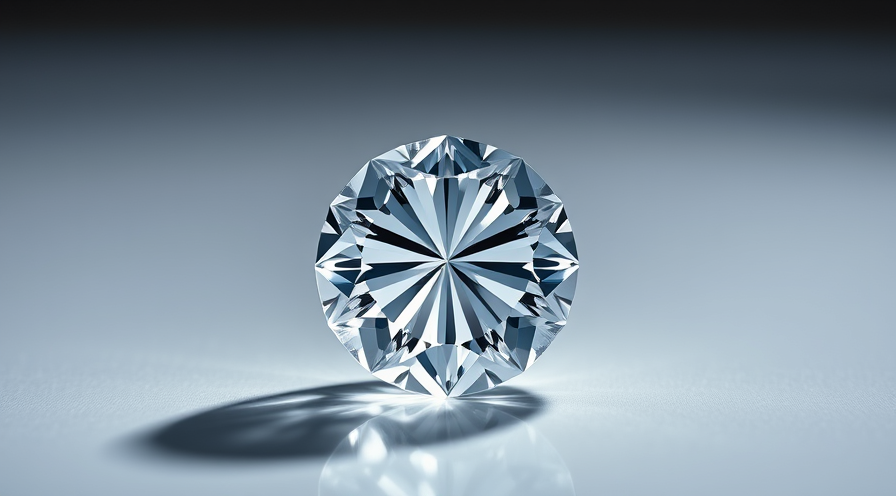Lab-Grown vs Natural Diamonds:
Diamonds have long symbolized luxury, romance, and timeless beauty. As technology advances, the market for diamonds has evolved significantly, presenting consumers with two primary choices: lab-grown diamonds and natural diamonds. Each option comes with distinct characteristics, ethical considerations, and value propositions. This article explores the key differences between lab-grown vs natural diamonds, helping readers make informed decisions when selecting their perfect gem.
Origins and Formation
Natural Diamonds: Born Deep Within the Earth
Natural diamonds form over billions of years under extreme heat and pressure, approximately 100 miles beneath the Earth’s surface. This slow geological process creates carbon crystals with specific physical properties that make diamonds extraordinarily hard and durable. Over time, volcanic activity brings these diamonds closer to the surface, where they are eventually mined.
Because of their natural origin, these diamonds carry a sense of rarity and history that appeals to many buyers. Each natural diamond is unique, reflecting the complex geological conditions it endured.
Lab-Grown Diamonds: Engineered Perfection
Lab-grown diamonds are created in controlled laboratory environments using advanced technological processes such as Chemical Vapor Deposition (CVD) or High Pressure High Temperature (HPHT). These methods replicate the natural conditions required to form diamonds but accomplish it within weeks rather than billions of years.
Importantly, lab-grown diamonds possess the same optical, physical, and chemical properties as natural diamonds. They are real diamonds, just grown in a fraction of the time, often at a lower cost and with greater environmental control.
Quality and Appearance Comparison
Visual Indistinguishability
To the naked eye, lab-grown and natural diamonds are virtually indistinguishable. Both types exhibit the signature brilliance, fire, and scintillation that define diamond quality. Reputable gemological labs like GIA and IGI can often differentiate between the two through specialized equipment, but consumers generally cannot tell the difference without certification.
Grading and Certification
Diamonds—whether lab-grown or natural—are evaluated using the Four Cs: Cut, Color, Clarity, and Carat weight. Both categories receive grading reports from independent laboratories, which are essential for verifying authenticity and assessing value. While natural diamonds are typically certified by GIA, lab-grown diamonds may be certified by labs such as IGI or GCAL, which have adapted their grading standards for synthetic gems.
Environmental and Ethical Considerations
Mining Impact of Natural Diamonds
Traditional diamond mining is associated with significant environmental disruption. Large-scale operations often require excavation and land disturbance, which can lead to habitat destruction, soil erosion, and water pollution. Moreover, some natural diamonds are linked to ethical concerns, such as conflict diamonds produced in war zones and exploited labor forces.
Efforts like the Kimberley Process have been established to improve transparency within the supply chain and reduce the circulation of conflict diamonds, but challenges persist in ensuring fully ethical sourcing.
Lab-Grown Diamonds: A Sustainable Alternative
Lab-grown diamonds offer a more environmentally friendly option. They require less energy and have a considerably smaller carbon footprint compared to mining. Additionally, they circumvent many ethical issues related to human rights abuses and conflict funding.
By choosing lab-grown diamonds, consumers support more sustainable practices and lessen the demand for mining activities, aligning with the growing preference for socially and environmentally responsible consumer goods.
Value and Market Trends
Pricing Dynamics
One of the most significant differences between lab-grown vs natural diamonds lies in price. Lab-grown diamonds generally cost 30-40% less than their natural counterparts with comparable quality and size. This pricing advantage makes them attractive to budget-conscious buyers who want maximum carat weight without compromising on appearance.
Resale and Investment Considerations
Natural diamonds tend to hold their value better over time due to their scarcity and market demand. In contrast, lab-grown diamonds currently do not enjoy the same level of value retention. The industry is evolving, but resale markets for synthetic diamonds are less established.
For investors and collectors, natural diamonds remain the preferred choice. However, for personal use and fashion, lab-grown diamonds present an affordable and stylish alternative without sacrificing quality.
The Buyer’s Decision: Which Diamond Suits You?
Factors Influencing Choice
- Budget: Lab-grown diamonds offer more size and quality for less money.
- Ethics and Sustainability: Those prioritizing environmental impact may lean toward lab-grown options.
- Sentimental and Investment Value: Natural diamonds have a rich history and tend to maintain value over time.
- Certification and Trust: Always insist on reputable certification regardless of diamond origin.
Personal Preference and Trends
As consumer awareness grows, lab-grown diamonds continue gaining popularity, especially among millennials and eco-conscious shoppers. Both lab-grown and natural diamonds can symbolize love and commitment beautifully; thus, the best choice often depends on individual values, priorities, and aesthetic preferences.
Conclusion: Informed Choices for Lasting Sparkle
Both lab-grown and natural diamonds bring unique benefits and considerations to the table. Natural diamonds represent tradition, rarity, and resilience shaped by nature across eons. Lab-grown diamonds deliver affordability, environmental responsibility, and technological innovation with identical physical properties.
By understanding the differences in origin, appearance, ethics, and value, consumers empower themselves to select a diamond that aligns with their needs and values. Whether choosing a radiant natural diamond or a sparkling lab-grown alternative, the perfect diamond remains a timeless symbol that endures for generations.
Explore certified offerings from trusted jewelers, compare quality reports, and consider both your ethical priorities and financial goals. This thoughtful approach ensures the diamond you choose will shine as brightly in meaning as it does in light.
